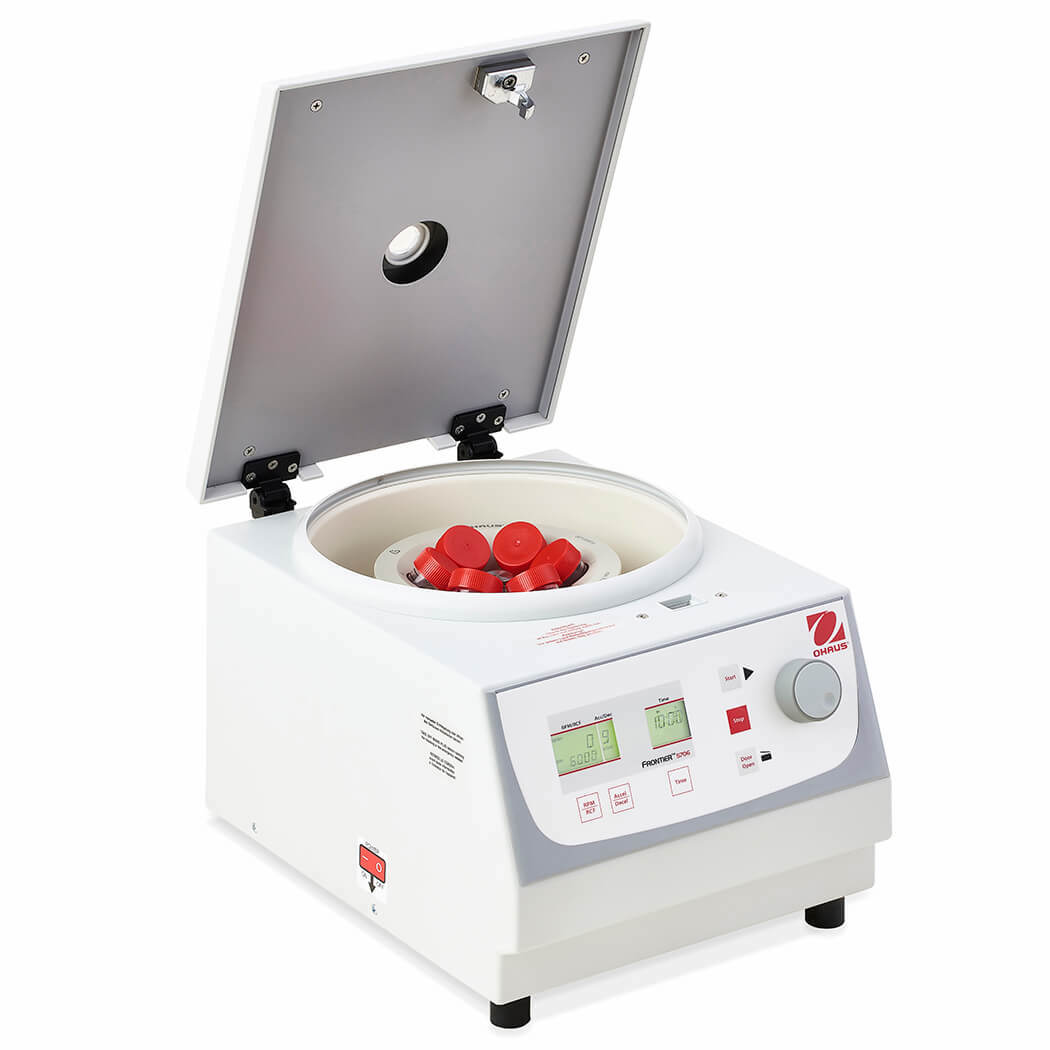Members Login

Channels
Special Offers & Promotions
Use of OHAUS Centrifuges in Cosmetology
From daily lotions that keep skin soft to moisturizers for a refreshing face wash, emulsions are synonymous with protecting and nourishing the skin. These cosmetic products are indispensable to many, and the science behind them is quite fascinating.
Blending the Incompatible
When you successfully combine two or more fluids that usually don’t mix well together, you create an emulsion. Think of mixing oil and water and actually having them gel together to form a new substance. That new substance is the emulsion, and the process of mixing the fluids together is called emulsification.
Lotions, creams, and moisturizers are all cosmetic emulsions — lightweight, nonsticky, water-based mixtures of oil, fat, wax, and other raw materials. Because these emulsions are water-based, they help the skin retain its hydration level and prevent moisture loss.
During the emulsification process of cosmetic lotions, creams, and moisturizers, very small droplets of fat, oil, or wax are suspended in a fluid — usually water — and are evenly dispersed. These incompatible liquids are then divided into layers. Substances with lower density, like oil or wax, are at the upper layer, while water, which has the highest density, is at the lower one. When the right surface-active agents are added into the mix and are stirred strongly, the oil or wax will disperse in water, forming the emulsion.
The Importance of Equipment, Temperature, and Time in the Emulsification Process
The kind of equipment used to emulsify incompatible liquids is the most important factor in the process. Whether simple or complex, emulsifying equipment breaks up the substances during the internal phase and disperses them during the external one, forming small particles and ensuring there is no oil seepage or stratification during the stable period.
At present, three types of emulsifiers exist: the agitator, the colloid mill, and the homogenizer. Results vary based on the size, structure, and performance of these devices, generally impacting the dispersion and stability of the final product. In other words, the size of the particles in the emulsion and the quality of the emulsion itself strongly depend on how the components are processed and stabilized by these devices.
Among the three, the agitator is the poorest performer compared to the colloid mill and the homogenizer, which are both better at emulsifying incompatible substances. In recent years, improvements in emulsification technology have led to the emergence of vacuum emulsification mixers. These devices are able to prepare emulsion with excellent dispersion and stability, creating lotions and creams that are much more delicate and smooth. In addition to equipment, temperature and time also play important roles in the emulsification process. These two factors mainly impact the quality of the final product.
In general terms, the temperature portion of the process is typically carried out in two phases. Phase one addresses the highest melting point of each substance, and phase two addresses solubility. During each phase, the temperature must be monitored very closely. If the viscosity increases greatly during the emulsification process, for example, the temperature may be increased appropriately.
As for determining the time involved in the emulsification process, that depends on the volume ratio of the oil-to-water phase, the viscosity achieved during the two temperature phases, and the resulting emulsion.
Centrifuge Experiments
Because cosmetic emulsions are applied directly on the skin, the quality of these products must be rigorously tested and analyzed. Centrifugal separation experiments accomplish this by testing the stability and shelf life of cosmetic emulsions such as face wash, skin lotion, and hair dye.
These experiments are carried out with a low-speed centrifuge and a thermostat. The number of rotations and time vary by product, but, generally speaking, when a sample is placed inside the centrifuge, it is spun around at a speed that ranges between 2,000 and 4,000 rotations per minute for an interval of 30 minutes. This allows for observable separation and stratification of the product.
In basic face wash products, for instance, the sample needs to be centrifuged at a rate of 2,000 rotations per minute for an interval of 30 minutes. With regard to skin lotion, quality is determined based on separation. High-quality lotions do not experience emulsification after being centrifuged at 4,000 rotations per minute during a 30-minute interval. The lower the number of rotations, the lower the quality of the final product.
The OHAUS FC5706 Centrifuge: A Light, Portable, and Intelligent Assistant
The OHAUS FC5706 Centrifuge is a high-efficiency device that delivers results in developing emulsion cosmetics.
Light and compact by design, the OHAUS FC5706 Centrifuge has an ergonomic rotary knob, an intuitive panel design, and dual safety control that monitors the system and its speed. During the centrifugal process, our device works silently in the background, maintaining a quiet and comfortable lab environment.
The device has three types of rotors and seven centrifuge tubes with capacities varying between 1.5 and 50 milliliters. Its time range setting can reach 99 hours and 99 minutes.
The OHAUS FC5706 Centrifuge is a low- and medium-speed device specially designed for the cosmetics industry.
Learn more about OHAUS Centrifuges.
View Company Profile & Recent News
Media Partners



